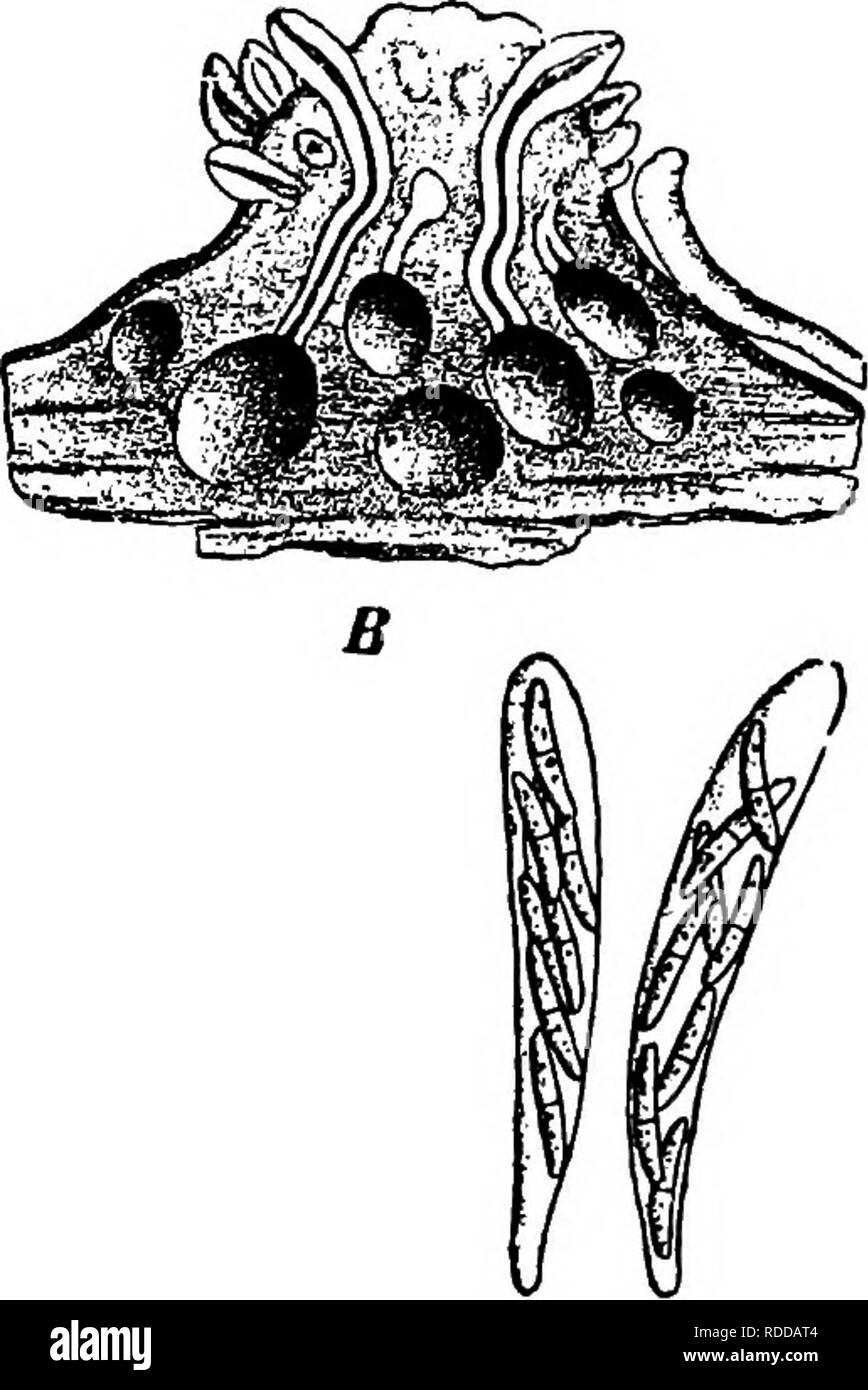. The fungi which cause plant disease . Plant diseases; Fungi. THE FUNGI WHICH CAUSE PLANT DISEASE 279. Fig. 208.- in section lasne. Diaporthe. C, asci. o B, stroma. After Tu- hyaline, appendaged or not; pa- raphyses none. Conidia=Phoma, Cytospora, etc. D. taleola (Fr.) Sacc. Stroma cortical, definite, de- pressed, pulvinate, 2-4 mm., cov- ered; perithecia few, 4-10, buried, their ostioles converging, erumpent in a small light-colored disk; asci cylindric, 120-140 x 10-12 ix, spores elliptic, uniseptate, constricted, with setaceous appendajges, 15-22 x 8-9/1. It causes canker on oak, killing t

Image details
Contributor:
The Book Worm / Alamy Stock PhotoImage ID:
RDDAT4File size:
7.1 MB (286.5 KB Compressed download)Releases:
Model - no | Property - noDo I need a release?Dimensions:
1292 x 1933 px | 21.9 x 32.7 cm | 8.6 x 12.9 inches | 150dpiMore information:
This image is a public domain image, which means either that copyright has expired in the image or the copyright holder has waived their copyright. Alamy charges you a fee for access to the high resolution copy of the image.
This image could have imperfections as it’s either historical or reportage.
. The fungi which cause plant disease . Plant diseases; Fungi. THE FUNGI WHICH CAUSE PLANT DISEASE 279. Fig. 208.- in section lasne. Diaporthe. C, asci. o B, stroma. After Tu- hyaline, appendaged or not; pa- raphyses none. Conidia=Phoma, Cytospora, etc. D. taleola (Fr.) Sacc. Stroma cortical, definite, de- pressed, pulvinate, 2-4 mm., cov- ered; perithecia few, 4-10, buried, their ostioles converging, erumpent in a small light-colored disk; asci cylindric, 120-140 x 10-12 ix, spores elliptic, uniseptate, constricted, with setaceous appendajges, 15-22 x 8-9/1. It causes canker on oak, killing the cortex over large areas. A year later the cushion-like stromata appear. The myceliimti penetrates both wood and bark, probably enter- ing through wounds. D. albocarnis E. & E. on Comus is destructive. D. ambigua and D. sarmentella are on pear and hop, D. stru- mella on a wide range of hosts, in conidial form as Phoma. Melanconidaceae (p. 223) A small family of less than two hundred species contains only four parasitic genera. Stroma pulvinate, sunken; perithecia sunken in the stroma, the mouth erumpent; asci cylindric or clavate; paraphyses present. Key to the Geneba of Melanconidaceae Spores 1-celled, hyaline Spores ellipsoid or short-fusiform 1. Ciyptosporella, p. 280. Spores elongate-cylindric, curved 2. Ciyptospora. Spores 2-ceUed Spores hyaline Conidia in pycnidia; 1-celled, hyaline. 3. Valsaria. Conidia not in pycnidia, dark brown. 4. Melanconis, p. 281. Spores brown 5. Melanconiella.. Please note that these images are extracted from scanned page images that may have been digitally enhanced for readability - coloration and appearance of these illustrations may not perfectly resemble the original work.. Stevens, Frank Lincoln, 1871-1934. New York : Macmillan